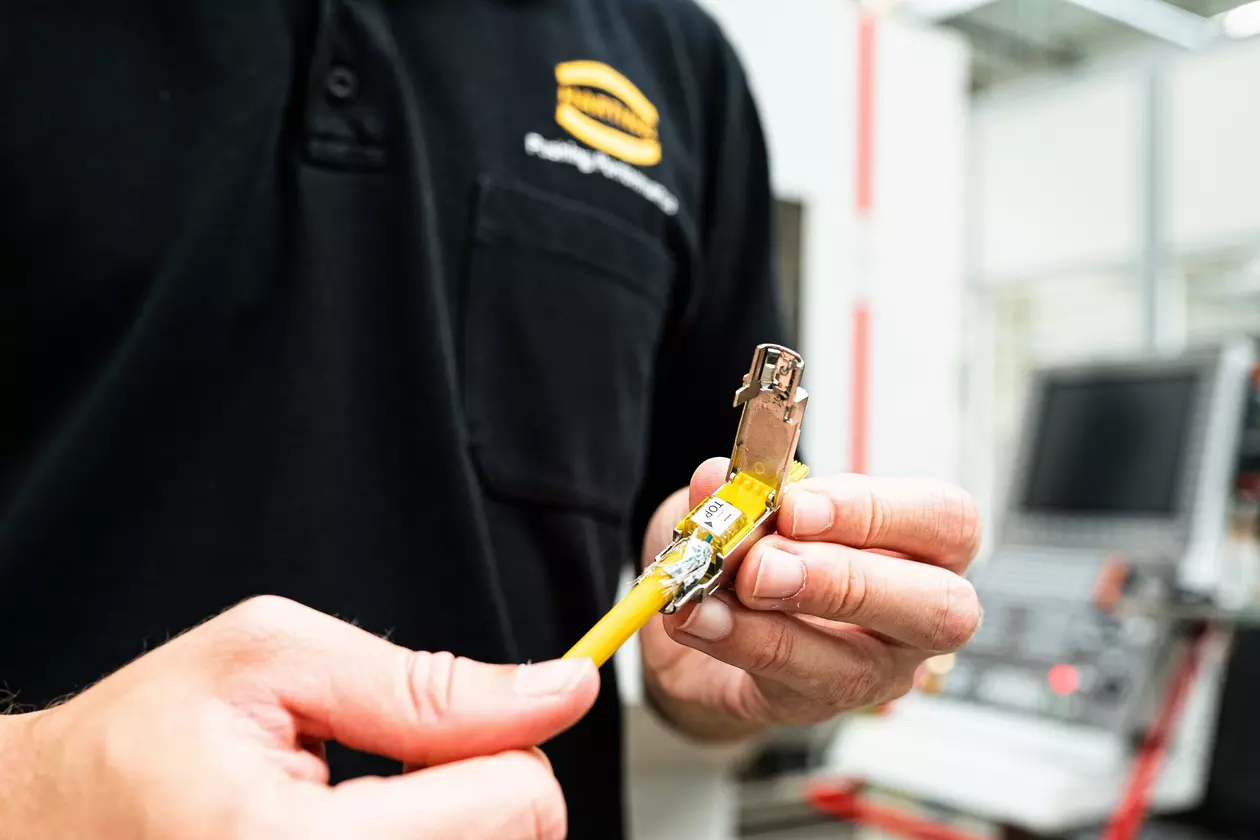Circular connector termination technology

HARTING metric cirular connectors can be connected using conventional termination techniques. The proper termination technology is selected based on criteria such as cable type, cable cross-section, contact type and number of contacts. Discover our wide range of termination options.
Crimp termination

In crimping terminations, a wire is enclosed in a gas-tight manner within the crimp contact by controlled deformation with crimping pliers or hydraulic/pneumatic crimping tools. This technique virtually produces a cold weld, thus ensuring the optimum resistance to ageing and mechanical stress from shock and vibration.
HARAX® termination
HARAX® is a tool-free rapid termination technique from HARTING. The contact is established via insulation displacement contacts. M8 / M12 circular connectors with HARAX® connection can be easily assembled by hand on-site.

Screw termination

With screw terminations, the wire is crimped onto the male contact / contact sleeve of the circular connector using a screw. The technique is simple and effective and does not require any special tools.
preLink® insulation displacement termination
preLink® is based on insulation displacement technique and is used for data connectors up to 10 Gigabit/s. The wires are fed into a cube-shaped termination block and crimped/contacted and shortened in one operation using assembly pliers. This termination block can be clipped into M12 circular connectors as well as matching RJ45 connectors, cable couplings or PCB sockets. The mating face can be changed in seconds at any time.

THR solder termination
With THR (Through Hole Reflow) soldering technology, the connector is inserted – similarly to conventional component assembly – into through-plated PCB holes. This can be done automatically with Pick&Place placement machines. These THR components are then soldered together with the components placed on the surface as part of a common reflow soldering process. This termination technique features outstanding mechanical robustness and is made possible by a design that is specially adapted to the reflow soldering process (e.g. the use of high-temperature plastic).

THT solder termination

Conventional soldering technology has been proven over decades; it ensures the highest level of mechanical stability and process safety. The soldering pins of the connectors are inserted into through-plated PCB holes. They can then be automatically and simultaneously wave soldered to other components.
Reflow temination (SMT)
SMT (Surface Mounted Technology) connectors, in contrast to through-hole technology, do not have wire terminals, but are soldered directly to the solder pads on the PCB surface. This procedure is used for circuit board placement based on a uniform termination technique. It offers advantages as the use of SMT connectors eliminates the need for separate wave soldering.
